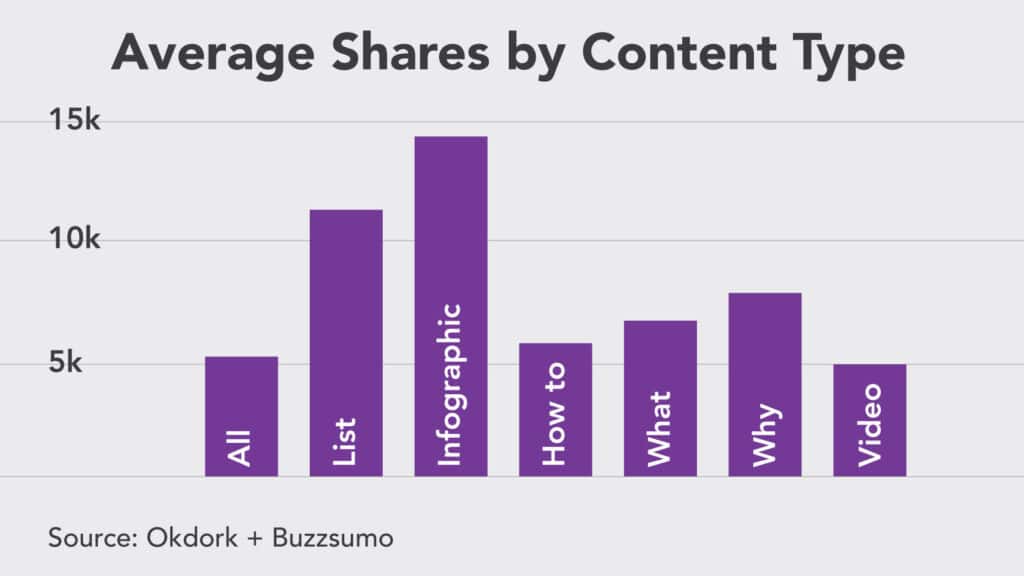Subscribe to Our Newsletter
We live in skeptical times. Poll after poll tells us that trust in institutions—and the information they promulgate—is at an all-time low. But before making major purchasing decisions in this environment, B2B decision makers want to see data on performance, projected cost/benefit, environmental impact, customer satisfaction, and more. As importantly, they want to deploy data themselves to establish credibility for their own company and its products.
Research is obviously key to generating data. But equally critical is how to present it in a way that informs, reassures, and even inspires. Capitalizing on the power of creative data visualization approaches to reach attention-challenged decision makers is essential for branding, whether online, in presentations, on film, or in advertising.
The Power of Telling Stories
At heart, brands tell stories—about a company’s purpose, its products, its people, its vision.
Memorable stories are told in words, of course, but also in images. It is estimated that 90% of information transmitted to the brain is visual, and that visuals are processed in the brain at 60,000 times the speed of text. It’s no wonder that sites like Instagram, TikTok, and YouTube dominate so much of our time, and that posts on Facebook and X that contain images generate more engagement than those that feature text alone.
One of the most powerful and memorable image types is data. Presented creatively, data can simplify concepts, support and amplify a claim, and generate trust and confidence in your value proposition.
Consider a long-standing client of ours, a leading global specialty chemicals company. The company’s products are vitally important to several major industries, including aerospace, automotive, and steel. Yet its role in the success of these industries was often unappreciated by customers, investors and, crucially, employees and recruits.
We developed a brand based on the company’s ability to drive the success of its clients—and of entire industries. To demonstrate this, and to make it credible, we told the company’s brand story using both words and data. The data highlighted the number of companies within key industries that used our client’s products and the efficiency gains these products delivered.
The Unique Advantages of Data
Using data to tell your brand story offers a number of significant advantages. These include:
- Authenticity
Data adds credibility. Think of how many companies promote themselves as “the leading” (fill in the industry or product here). Consumers instinctively skip over tired statements like these. Add data, however, and consumers will sit up and take notice. A statement like “25% of Fortune 500 companies trust us to…” adds substance and authenticity to your story. - Awareness
When presented creatively as an infographic, data stands out. Data can add visual interest to a text- heavy story while allowing the reader to access information quickly. Data is also highly shareable, which means your brand story will be exposed to more people. - Deepening Context
Data can add context to text by going deeper in a highly concise manner. Rather than devoting a paragraph to comparing two trends, you can show them the comparison through a data visualization that quickly and memorably makes your point.
We recently worked with an innovative fintech company that offers a unique solution for delivering working capital to companies. The company’s brand is based on ensuring that every company has the financial resources it needs to thrive.
The company used data in two ways to support its brand. Data visualizations explain the company’s success in making working capital available to companies across the global supply chain, and give a sense of scope and scale. And a proprietary research endeavor gives customers and prospects a wealth of data on how their peers access and use working capital.
For a young company in an emerging industry where trust is at a premium, both types of data validate the company’s offering and provides reassurance.
Generating Proprietary Data
Using data derived from proprietary research is another way that companies can strengthen their brands. A financial services client wanted to communicate its commitment to advancing the success of women. Significantly, the company wanted to go beyond issuing over-used statements about the importance of equity and inclusion.
It commissioned a comprehensive research study to gain insights into how women executives managed both their personal and their corporate finances. The resulting report contained a number of eye-opening insights, all presented through compelling data visualizations.
Acquiring proprietary data through research can be a powerful strategy for ensuring that your brand is noticed. It’s amazing the number of times a client has mentioned their desire to be seen as a “thought leader.” And our response is always the same: “In what areas can you lead?” Data gleaned through research is one of the best ways to stake out—and authenticate—leadership claims.
In sum: choose your research target wisely (ideally a topic not already covered by others), and then use it to develop a repository of data that, presented over time, can establish a valid and credible thought leadership position.
Best Practices for Using Data to Tell Brand Stories
Data is often used to convey complex ideas. But using data effectively to support your brand isn’t necessarily complex. We have three rules for doing this right.
Make it stand out
Data can enhance your brand story, but flooding your brand communications with data risks overwhelming your audiences and even turning them off. Using too much data also risks giving the impression that your company is cold, overly analytic, unempathetic—generally the opposite of what most brands are intended to communicate.
The key to avoiding this is to make data appealing, impactful, and easy to digest by visualizing the data through infographics, diagrams, and charts.
Make it credible
Let your audiences know the source of the data you’re presenting, whether it’s from your own research or a third-party. Data can be a powerful source of authenticity, but without the proper context, it can backfire and come across as untrustworthy.
Make it real
Data is unemotional—that’s its unique power, its ability to present information in an objective, can’t-argue-with-this fashion. But this doesn’t mean that you can’t, and shouldn’t, warm up your data to make it more accessible and meaningful to your audiences.
Present your data in stories instead of stats. Use case studies that illustrate a data point in practice. Testimonials can be another good way to give depth and meaning to a data point.
Building Credibility—and Your Brand
At a time when anyone with a social media account can promulgate “facts” to make a point to large audiences, passing the eye-roll test with your brand is more and more challenging. But done right, using data to support your brand story can be a successful way to cut through the skepticism and convert doubters into believers.
It requires solid data, thoughtfully collected—and the storytelling skills to make it compelling.
Want to discuss using your data to tell stories that build trust in your brand? Let’s talk.




